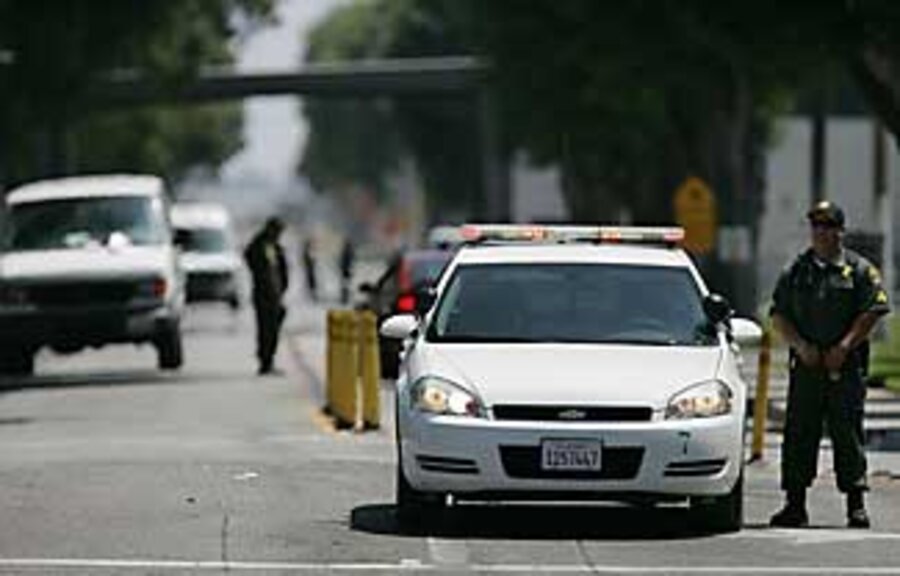Crowded cells, racial tensions stoke California prison riot
Loading...
| Los Angeles
A riot that injured almost 200 inmates at a prison in Chino, 40 miles east of Los Angeles, was reportedly sparked by racial tensions between blacks and Latino inmates, but experts say overcrowded conditions are what probably fanned the flames into violence.
The melee broke out around 8:20 p.m. Saturday, among about 1,300 of the prison's 5,900 inmates housed at the California Institution for Men in military-style, wooden barracks designed to hold 3,000 people. Black and Latino prisoners barricaded themselves in one corner of the barracks and used improvised weapons such as pipes and glass to beat and stab one another. A dormitory was burned and 55 inmates were seriously injured in the incident.
The riot comes less than two weeks after a three-judge federal panel ordered California to come up with a plan within 45 days to reduce prison population by 40,000 over two years.
"If ever there was a situation that proves this was a right decision, this riot is it," says Barry Krisberg, president of the National Council on Crime and Delinquency in Oakland, Calif. He says that overcrowding – besides jamming two or three inmates in spaces intended for one – takes away gymnasium space and classrooms dedicated to programs specifically aimed at easing tensions within prisons.
Managing racial tension
Officials said Monday that race may have been a factor in the incident and that 1,100 inmates would be moved to other facilities. California began integrating its prison cells a year ago, though Chino has reportedly not yet been integrated. The state's prison gang culture is entrenched largely along racial lines.
Mr. Krisberg cautions against jumping to any conclusion about the role of racial tensions in the riot.
"Other states have managed to integrate prison systems without the huge potential for violence in California," says Krisberg. "Sure, there is a lot of racial antagonism in this state, but my suspicion is that racial integration could be managed if you didn't have this kind of overcrowding."
The state prison system is built to hold 68,000 but currently imprisons 145,000.
To help reduce overcrowding, California needs to rethink its "three strikes law," which mandates a minimum sentence of 25 years to a life on the third felony, as well at its parole policies, experts say. The state releases 140,000 prisoners a month, but 80 percent are sent back to prison within six weeks to two months, often for parole violation technicalities.
"Many of these inmates don't understand the protocol of parole because the programs to teach them have been dropped to make room for more prisoners," says Justin Brooks, a California Western School of Law professor who used to teach such classes in prison.
Training the guards
Professor Brooks points to the disconnect between guards and prisoners as a key reason for prison riots.
"The US puts its prisons out in the middle of nowhere and hires corrections officers from the local community, while the facility gets filled with inner-city minorities. Then we are somehow surprised when there is a cultural disconnect between those who run the prisons and those who are there," says Brooks, who has done a comparative study of prisons in the United States and Britain.
Britain has fewer prison riots than the US, he says, because the officers are more integrated with the inmate population and thus are able to diffuse daily issues as they come up.
"California prisons have skinheads and blacks and Mexicans and are subdivided by street gangs ... so it takes a lot of skill and defensive ability to keep everybody under control," says Brooks.
Guards are not adequately trained in conflict resolution, but rather in law enforcement and safety, adds Adrian Pantoja, a specialist in race relations and urban unrest at Pitzer College in Claremont, Calif.






